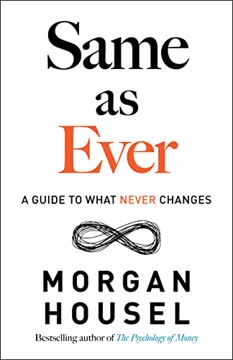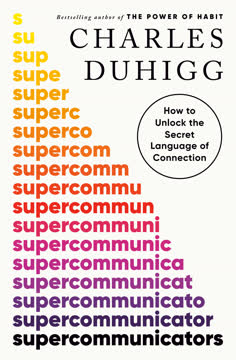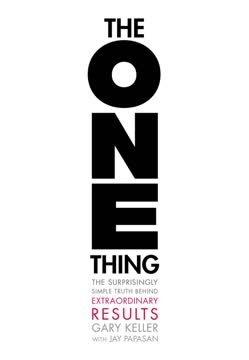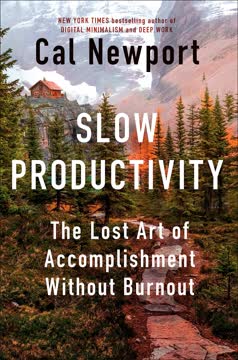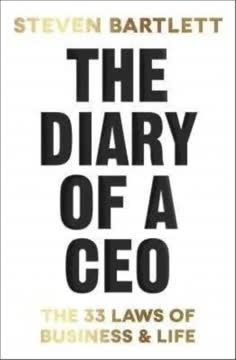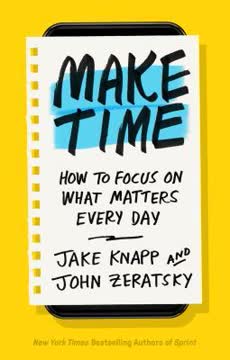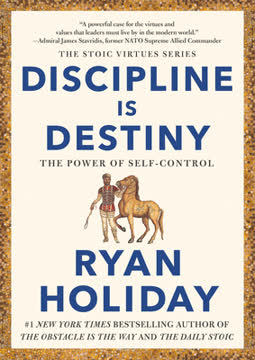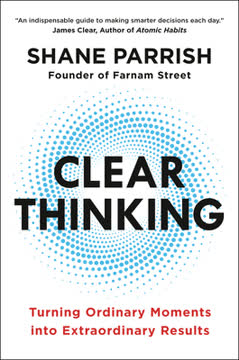つの重要なポイント
1. 注意を意図的に管理して生産性と創造性を高める
注意は、良い生産的な生活を送るための最も強力なツールです。
注意は有限です。 私たちの脳は、毎秒受け取る1100万ビットの情報のうち、約40ビットしか処理できません。この限られた注意空間は、生産性と創造性の両方にとって重要です。注意を意図的に管理することで、重要なタスクに深く集中(ハイパーフォーカス)し、心を生産的にさまよわせる(スキャッターフォーカス)ことができます。
意図的な注意管理の利点:
- 生産性の向上
- 創造性の向上
- 思考の明確化
- 仕事や生活へのより深い関与
- より意味のある経験
- ストレスと圧倒感の軽減
注意管理を改善するために:
- タスクに対する明確な意図を設定する
- 注意をそらすものを積極的に排除する
- メタ認識を実践する(自分の注意がどこに向かっているかを認識する)
- 深い集中と意図的な心のさまよいの期間を交互に行う
2. ハイパーフォーカス:一度に一つの重要なタスクに集中する
タスクにハイパーフォーカスすると、一つのタスク、プロジェクト、または他の注意対象が注意空間を完全に満たします。
ハイパーフォーカスは生産性を高めます。 重要なタスクに集中することで、短時間で多くのことを達成できます。この深い集中状態は、特に複雑なタスクや創造的なタスクにおいて、効率的かつ効果的に作業することを可能にします。
ハイパーフォーカスに入るために:
- 重要なタスクを一つ選ぶ
- 注意をそらすものを排除する
- 選んだタスクに完全に集中する
- 注意がそれたら継続的に戻す
ハイパーフォーカスの利点:
- 作業の質の向上
- タスクの迅速な完了
- 深い学習と理解
- 問題解決能力の向上
- 達成感の向上
3. 注意をそらすものを抑えて集中力と生産性を高める
注意をそらすものは、誘惑になる前に対処する方がはるかに簡単です。
積極的な注意そらし管理。 私たちの脳は新奇性を求めるように配線されているため、注意をそらすものは特に魅力的です。注意をそらすものが発生する前に排除することで、より長い期間集中を維持しやすくなります。
注意をそらすものを抑えるための戦略:
- 注意をそらさないモードを作成する(例:ウェブサイトをブロックする、通知を無音にする)
- 携帯電話を視界から外すか、別の部屋に置く
- ノイズキャンセリングヘッドホンを使用する
- メールやソーシャルメディアをチェックする特定の時間を設定する
- 物理的およびデジタル環境を簡素化する
覚えておいてください:注意をそらすものを拒否するたびに、将来的に集中力を高めるための脳の訓練をしているのです。
4. スキャッターフォーカス:創造性のために意図的に心をさまよわせる
スキャッターフォーカスは、脳の最も創造的なモードです。
意図的な心のさまよい。 ハイパーフォーカスが生産性に不可欠である一方で、スキャッターフォーカスは創造性、問題解決、将来の計画に不可欠です。意図的に心をさまよわせることで、新しいつながりや洞察が生まれる空間を作り出します。
スキャッターフォーカスの3つのタイプ:
- キャプチャーモード:思考を自由に流し、それを書き留める
- 問題解決モード:問題を緩やかに心に留めながら思考をさまよわせる
- 習慣的モード:単純なタスクに従事しながら心をさまよわせる
スキャッターフォーカスの利点:
- 創造性と問題解決能力の向上
- 将来の計画の向上
- 自己認識の向上
- 感情処理の改善
- 精神的エネルギーの再充電
5. 重要なことに取り組むために強い意図を設定する
意図は常に注意に先行すべきです。実際、この二つのアイデアは完璧に組み合わさります。
意図的なタスク選択。 達成したいことに対する明確な意図を設定することで、忙しさや注意をそらすものに巻き込まれることなく、重要なタスクに集中しやすくなります。
強い意図を設定するためのテクニック:
- 3つのルールを使用する:毎日3つの主要なタスクを選ぶ
- 最も重要なタスクを特定する
- 実行意図を作成する(具体的な「いつ-なら」計画)
- ピークエネルギーの時間帯に重要なタスクをスケジュールする
強い意図の利点:
- 意味のある仕事に対する生産性の向上
- 先延ばしの減少
- 目的意識と達成感の向上
- 日々の行動と長期的な目標のより良い整合
6. マインドフルネスと瞑想で注意空間を拡大する
瞑想は簡単です。目を閉じて呼吸に注意を向けるだけです。
精神的な容量の構築。 定期的なマインドフルネスと瞑想の実践は、作業記憶容量を増やし、同時により多くの情報を保持し処理することを可能にします。この拡大された注意空間は、集中力と創造性の両方を向上させます。
拡大された注意空間の利点:
- 複雑なタスクに集中する能力の向上
- 創造性と問題解決能力の向上
- 集中作業中の心のさまよいの減少
- メタ認識の向上(自分の思考に気づく)
- 感情調整の改善
毎日の瞑想を数分から始め、呼吸に集中します。練習を続けることで、集中を維持し、心がさまよったときに気づくのが容易になります。
7. 戦略的な休憩で注意をリチャージする
精神的エネルギーを補充するためにスキャッターフォーカスを頻繁に行うほど、最も重要なタスクに対するエネルギーが増えます。
意図的な休息。 定期的な休憩を取ることは、一日中高い集中力と生産性を維持するために重要です。戦略的な休憩は、心をリチャージし、創造性を刺激することもあります。
効果的な休憩のガイドライン:
- 少なくとも90分ごとに休憩を取る
- 1時間の作業ごとに約15分の休憩を目指す
- 低労力で楽しい活動を選ぶ
- 休憩中は仕事関連の思考から切り離す
効果的な休憩活動:
- 特に自然の中を散歩する
- 音楽を聴く
- 瞑想する
- 創造的な趣味に従事する
- 意味のある会話をする
覚えておいてください:忙しいほど、定期的な休憩を取ることが重要です。
8. 価値のある「点」を収集し、つなげる
私たちは、消費するものによって形成されます。
意図的な情報消費。 取り入れる情報の質は、創造的なつながりを作り、問題を解決する能力に直接影響します。価値のある「点」を意図的に収集することで、将来のための精神的なライブラリを強化します。
消費する情報の種類:
- 有用:実行可能で、目標に関連し、長期的な価値がある
- バランス:有用でありながらも楽しめる(例:よく書かれたノンフィクション)
- 娯楽:楽しいが実用性は低い(控えめに使用)
価値のある点を収集するための戦略:
- 特に自分の専門分野外の広範な読書
- 意味のある会話に参加する
- コースを受講するか、ワークショップに参加する
- 多様な経験や視点に触れる
覚えておいてください:創造性は、収集した情報によって制限されます。精神的なライブラリを拡大して、創造的な可能性を高めましょう。
9. エネルギーレベルに合わせて作業し、最適なパフォーマンスを発揮する
エネルギーが豊富な瞬間を最も複雑で意味のあるタスクに捧げるとき、最も生産的です。
エネルギーに合わせた生産性。 私たちのエネルギーレベルは一日中変動し、集中力と創造性に影響を与えます。自然なエネルギーリズムに合わせてタスクを調整することで、生産性と創造性の両方を最適化できます。
エネルギーに合わせた作業の戦略:
- 集中作業のための生物学的プライムタイム(BPT)を特定する
- BPTに複雑で高優先度のタスクをスケジュールする
- 低エネルギーの時間帯に創造的なタスクを行う(創造的プライムタイム)
- エネルギーが低下したときに休憩を取る
覚えておいてください:自然なエネルギーリズムに合わせて作業することで、少ない労力とストレスで多くのことを達成できます。
10. 幸福に投資して集中力と創造性を高める
幸福は、注意空間の上に置くバラ色のレンズであり、経験に対してより生産的かつ創造的に関わることを可能にします。
ポジティブな生産性。 ポジティブな気分は注意空間を拡大し、深く集中し、創造的に考えることを容易にします。意図的に幸福を育むことで、生産性と全体的な幸福感の両方を向上させることができます。
科学的に裏付けられた幸福を高める戦略:
- 感謝の実践(例:毎日感謝していることを3つリストアップする)
- 定期的な運動に従事する
- 意味のある人間関係に時間を投資する
- 瞑想やマインドフルネスを実践する
- 無作為の親切を行う
幸福が生産性と創造性に与える利点:
- 拡大された注意空間
- 課題を克服する能力の向上
- 問題解決能力の向上
- 記憶の向上
- 挫折に対する回復力の向上
覚えておいてください:幸福に投資することは、単に幸福感を高めるだけでなく、強力な生産性ツールでもあります。
最終更新日:
FAQ
What's Hyperfocus: How to Manage Your Attention in a World of Distraction about?
- Focus on Attention Management: The book by Chris Bailey explores managing attention amidst distractions, emphasizing that productivity is more about attention management than time management.
- Two Modes of Focus: It introduces hyperfocus for intense concentration and scatterfocus for creative thinking, both essential for productivity and creativity.
- Practical Strategies: Bailey offers actionable strategies to cultivate hyperfocus and minimize distractions, aiding in accomplishing meaningful work.
Why should I read Hyperfocus by Chris Bailey?
- Combat Distraction: The book provides practical solutions to regain control over your attention, crucial in today's distraction-filled world.
- Research-Based Insights: Grounded in scientific research, it combines theory with practical advice, making it a credible resource for improving focus.
- Enhance Productivity: Effective attention management can significantly boost productivity and satisfaction in both work and personal life.
What are the key takeaways of Hyperfocus?
- Attention is Limited: Our attention is finite, capable of focusing on about 40 bits of information at once, highlighting the need for effective focus management.
- Intentional Focus: Setting clear intentions, like using the Rule of 3, helps prioritize tasks and direct attention to what truly matters.
- Tame Distractions: Strategies for a distraction-free environment, such as using apps and managing notifications, are crucial for maintaining focus.
What is hyperfocus, according to Hyperfocus?
- Deep Concentration: Hyperfocus is intense concentration on a single task, filling your attentional space and enhancing productivity and creativity.
- Deliberate Attention Management: Achieving hyperfocus involves choosing important tasks, eliminating distractions, and maintaining focus for a fulfilling work experience.
- Benefits of Hyperfocus: It allows accomplishing more in less time, increases work satisfaction, and reduces stress compared to multitasking.
How can I practice hyperfocus as suggested in Hyperfocus?
- Set Clear Intentions: Choose a specific, meaningful task to focus on, setting the stage for hyperfocus and effective attention direction.
- Eliminate Distractions: Create a distraction-free environment by turning off notifications and using distraction-blocking apps to minimize interruptions.
- Use Timers: Work on tasks for predetermined periods without interruption, creating urgency and encouraging sustained focus.
What is scatterfocus, and how does it relate to hyperfocus in Hyperfocus?
- Creative Thinking Mode: Scatterfocus involves letting your mind wander, essential for creativity and problem-solving.
- Balance Between Modes: Both hyperfocus and scatterfocus are necessary for optimal productivity, with hyperfocus for deep work and scatterfocus for innovation.
- Encouraging Mind Wandering: Engaging in scatterfocus can lead to breakthroughs, allowing the brain to process information less structuredly.
How can I incorporate scatterfocus into my routine as per Hyperfocus?
- Engage in Habitual Tasks: Perform simple tasks like walking or cleaning, allowing your mind to wander and create mental space for scatterfocus.
- Schedule Mind-Wandering Time: Set aside time for mind-wandering, letting thoughts flow without specific goals to foster creativity.
- Capture Ideas: Keep a notepad handy to jot down insights during scatterfocus sessions, retaining valuable thoughts that emerge.
What are some practical strategies from Hyperfocus to minimize distractions?
- Distraction Lists: Jot down thoughts or tasks that arise while focusing, acknowledging distractions without derailing attention.
- Mind Your Environment: Modify your workspace to reduce distractions, like keeping your phone away or using noise-canceling headphones.
- Set Boundaries: Establish specific times for checking emails and messages, maintaining focus on primary tasks.
What are the four types of tasks discussed in Hyperfocus?
- Necessary Work: Productive but unattractive tasks like meetings, requiring effort to engage with.
- Purposeful Work: Productive and attractive tasks like writing or mentoring, providing satisfaction and impact.
- Unnecessary Work: Neither productive nor attractive tasks, often serving as procrastination.
- Distracting Work: Attractive but unproductive tasks like social media, consuming time without meaningful results.
What are some effective methods to improve my attention as suggested in Hyperfocus?
- Meditation: Enhances working memory and attention span, training the brain to focus on a single object.
- Mindfulness: Increases awareness of thoughts and surroundings, reducing mind-wandering and improving task focus.
- Regular Reflection: Assess what occupies your attentional space, adjusting focus to maintain clarity and intention.
What are the best quotes from Hyperfocus and what do they mean?
- "Attention is your most valuable asset.": Emphasizes managing attention effectively, impacting productivity and life quality.
- "We are what we pay attention to.": Highlights that experiences and outcomes are shaped by focus, leading to a fulfilling life.
- "Your focus determines your reality.": Suggests that directing attention shapes perceptions and experiences, creating a satisfying reality.
How does Hyperfocus suggest managing distractions?
- Identify Common Distractions: Recognize and minimize common distractions, using apps or setting specific times for emails.
- Create a Focus Ritual: Establish routines or environments signaling the brain to concentrate, preparing for deep work.
- Practice Mindfulness: Increases awareness of distractions, allowing effective redirection of attention back to tasks.
レビュー
読者は一般的に『ハイパーフォーカス』の注意管理と生産性向上に関する実践的なアドバイスを高く評価している。多くの人々は、ハイパーフォーカスとスキャッターフォーカスの概念を啓発的だと感じ、集中した作業と創造的な思考のバランスを評価している。一部の批評家は、本書が一般的な生産性のアドバイスを繰り返していると感じるが、ほとんどの読者はベイリーの科学に基づいたアプローチと実行しやすい戦略に価値を見出している。また、著者自身によるオーディオブックのナレーションも好評である。
Similar Books
